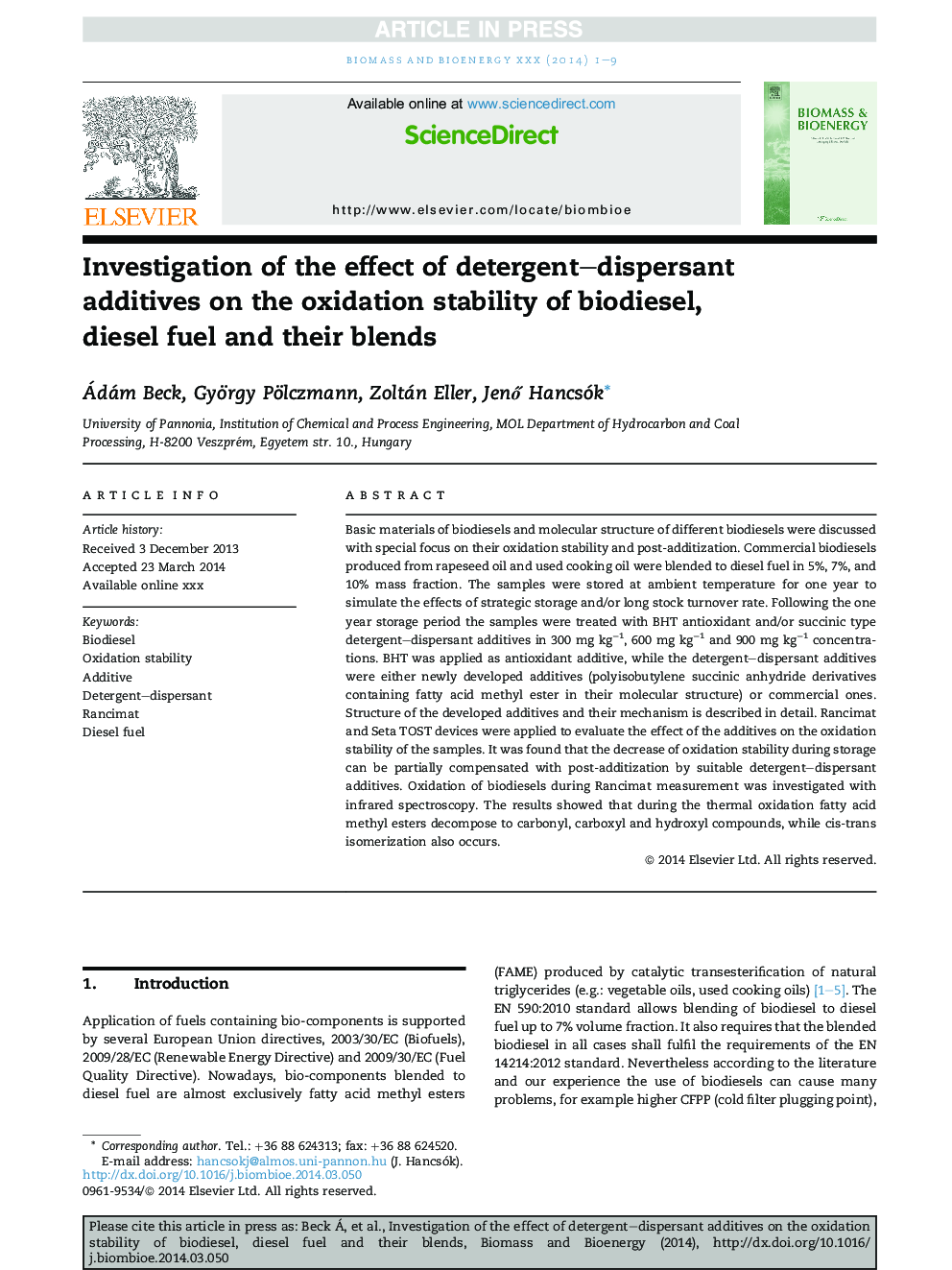| Article ID | Journal | Published Year | Pages | File Type |
|---|---|---|---|---|
| 7064768 | Biomass and Bioenergy | 2014 | 9 Pages |
Abstract
Basic materials of biodiesels and molecular structure of different biodiesels were discussed with special focus on their oxidation stability and post-additization. Commercial biodiesels produced from rapeseed oil and used cooking oil were blended to diesel fuel in 5%, 7%, and 10% mass fraction. The samples were stored at ambient temperature for one year to simulate the effects of strategic storage and/or long stock turnover rate. Following the one year storage period the samples were treated with BHT antioxidant and/or succinic type detergent-dispersant additives in 300 mg kgâ1, 600 mg kgâ1 and 900 mg kgâ1 concentrations. BHT was applied as antioxidant additive, while the detergent-dispersant additives were either newly developed additives (polyisobutylene succinic anhydride derivatives containing fatty acid methyl ester in their molecular structure) or commercial ones. Structure of the developed additives and their mechanism is described in detail. Rancimat and Seta TOST devices were applied to evaluate the effect of the additives on the oxidation stability of the samples. It was found that the decrease of oxidation stability during storage can be partially compensated with post-additization by suitable detergent-dispersant additives. Oxidation of biodiesels during Rancimat measurement was investigated with infrared spectroscopy. The results showed that during the thermal oxidation fatty acid methyl esters decompose to carbonyl, carboxyl and hydroxyl compounds, while cis-trans isomerization also occurs.
Related Topics
Physical Sciences and Engineering
Chemical Engineering
Process Chemistry and Technology
Authors
Ádám Beck, György Pölczmann, Zoltán Eller, JenÅ Hancsók,
